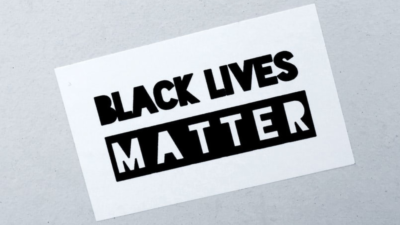 I started thinking about writing this post after reading my colleague Bryan Lindsley’s latest piece, “In a Changed World, It Matters How We Think About What to Do Next.” Bryan’s post was bookended in time by the leaked video of the killing of Ahmaud Arbrey, a young African-American man who was chased down and murdered while jogging in his neighborhood by a White father and son duo and, Breonna Taylor, a young African-American woman gunned down by the police in her home after working an extended shift as an emergency room technician.
I started thinking about writing this post after reading my colleague Bryan Lindsley’s latest piece, “In a Changed World, It Matters How We Think About What to Do Next.” Bryan’s post was bookended in time by the leaked video of the killing of Ahmaud Arbrey, a young African-American man who was chased down and murdered while jogging in his neighborhood by a White father and son duo and, Breonna Taylor, a young African-American woman gunned down by the police in her home after working an extended shift as an emergency room technician.
Two days later, George Floyd was violently murdered by police officers. The officers used their knees as their weapon of choice by applying continued pressure on Mr. Floyd’s neck and back as he gasped for air and repeatedly stated, “I can’t breathe, I can’t breathe, I can’t breathe.” His brutal death was again recorded on video for all the world to see and has since sparked protests in cities and towns across the country. These events aren’t new to any of us. However, these last few murders, coming in rapid succession, shifted something inside of me, awakening a deeply buried and protected rage and sadness that left me questioning if it is possible to change the status quo.
I think it’s easy for some people to keep these tragic acts of racialized violence and murder separate from our day to day work as practitioners aspiring to create equitable workforce development outcomes. But here’s the rub: it’s all the same energy. The same energy that fueled a father and son as they chased down and assassinated Ahmaud Arbery as he was jogging through his neighborhood is the same energy used when employers choose not to protect essential workers or pay a living wage or place a premium on job quality. It’s an energy characterized by a blatant disregard for life — most notably Black lives. And it’s the same energy that overpowered George Floyd as he lay in the street with a knee to his neck begging and pleading for his life, all because he was suspected of passing off a fake $20 bill. What does that say about our culture at a time when more than 42 million U.S. workers have lost their jobs since mid-March?
Is this what we should expect as people grapple with making it in an economy where the human and financial toll continue to mount to untenable levels? How might we think differently about how we increase economic security so that the George Floyds of the world stand a fighting chance in a society that has not wholly embraced the value of Black lives?
In all honesty, this is not the post I intended to write to accompany the release of a new report, Race, Risk, and Workforce Equity in the Coronavirus Economy, written by our colleagues at PolicyLink and Burning Glass. Yet here we are. And here I am, being race explicit. We have to, if we are to honor our commitment to engaging in meaningful solutions towards workforce equity. What it means to be race explicit is a topic we’re grappling with at the National Fund for Workforce Solutions. Personally — and I hope for our organization — being race explicit means naming it for what it is.
By naming it, you can’t hide from it or cloak it in flowery language in an attempt not to offend the status quo. Keep it real. Racism is ugly. Racism is violent. Racism is destructive. And racism has a vicious death grip on the soul of our nation.
You can’t pay lip service or dance around it. Race equity can no longer be an implicit endeavor in our work. Being explicit and naming it allows us to freely think about what to do next, laying bare the opportunity to embrace an applied system thinking lens to workforce equity in a real and impactful way. To do this requires that we draw on meaningful data points that illuminate the racial disparities in workforce development that we know exist in lockstep with health inequities and disparities and toxic economic inequality.
One of the most jarring data points in the report shows that women and people of color account for a disproportional share of coronavirus-related job loss, while simultaneously being overrepresented among essential workers like Breonna Taylor who risk their lives to sustain our country’s functioning as we navigate the pandemic. Echoing my colleague Bryan, it matters now, perhaps more than ever, how we think about what we do next. Let’s keep that same energy that we draw from to sustain our own lives and apply to our efforts to develop equity-focused solutions that lead toward a sustainable recovery for all. The time is now.
The Race, Risk, and Workforce Equity report is the first in a series of data-driven reports to design strategies that advance, at scale, race equity in the workforce. The series is being produced as part of the Jobs and Opportunity Report project led by the National Fund for Workforce Solutions and the National Equity Atlas – a research partnership between PolicyLink and the USC Program for Environmental and Regional Equity – in collaboration with Burning Glass Technologies.





